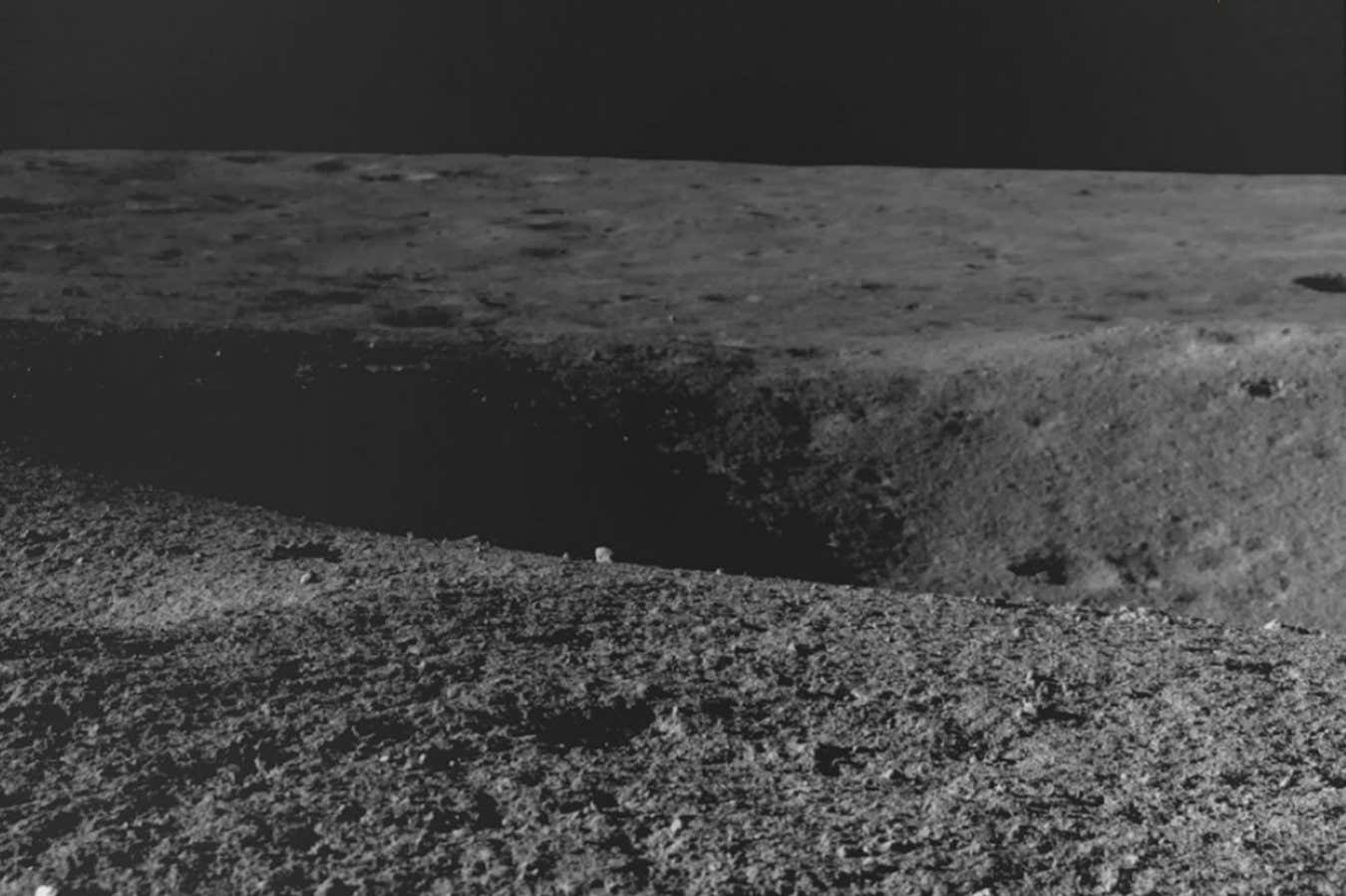The six-wheeled Pragyan rover had to change course to avoid a 4-metre-wide crater on the surface of the moon, as the Vikram lander has returned temperature readings from the lunar surface
By Matthew Sparkes
29 August 2023
A 4-metre-wide crater caused a course correction
ISRO
India’s moon rover has successfully steered around a small crater and carried on exploring uncharted territory near the south pole, while its mothership lander has transmitted its first scientific data, as the Chandrayaan-3 mission approaches its halfway point.
Four hours after the Indian Space Research Organisation (ISRO) spacecraft landed on 23 August, and once the sun had risen on the landing site, the six-wheeled Pragyan rover – which weighs just 26 kilograms – rolled off the Vikram lander and onto the lunar surface.
The rover sat near the lander while ISRO engineers carried out tests and waited for its solar panel to begin producing power, before it set off across the surface. On 27 August, Pragyan came across a 4-metre-wide crater, requiring a change in course. The rover is now “safely heading on a new path”, ISRO tweeted on 28 August.
Advertisement
The Chandrayaan-3 mission has also provided its first useful scientific data, with a device on the lander called ChaSTE (Chandra’s Surface Thermophysical Experiment) sampling the temperature of the moon dust below the surface. At a depth of 20 millimetres, the temperature was around 40°C (104°F), but this dropped off rapidly because the dust is a poor thermal conductor, with the temperature falling to -10°C (14°F) at a depth of 80 millimetres.
This means there could be liquid or frozen water just beneath the surface, with huge implications for crewed missions, as water can be drunk by astronauts or used to create breathable oxygen and rocket fuel.
The Pragyan rover’s tracks on the lunar surface ISRO
